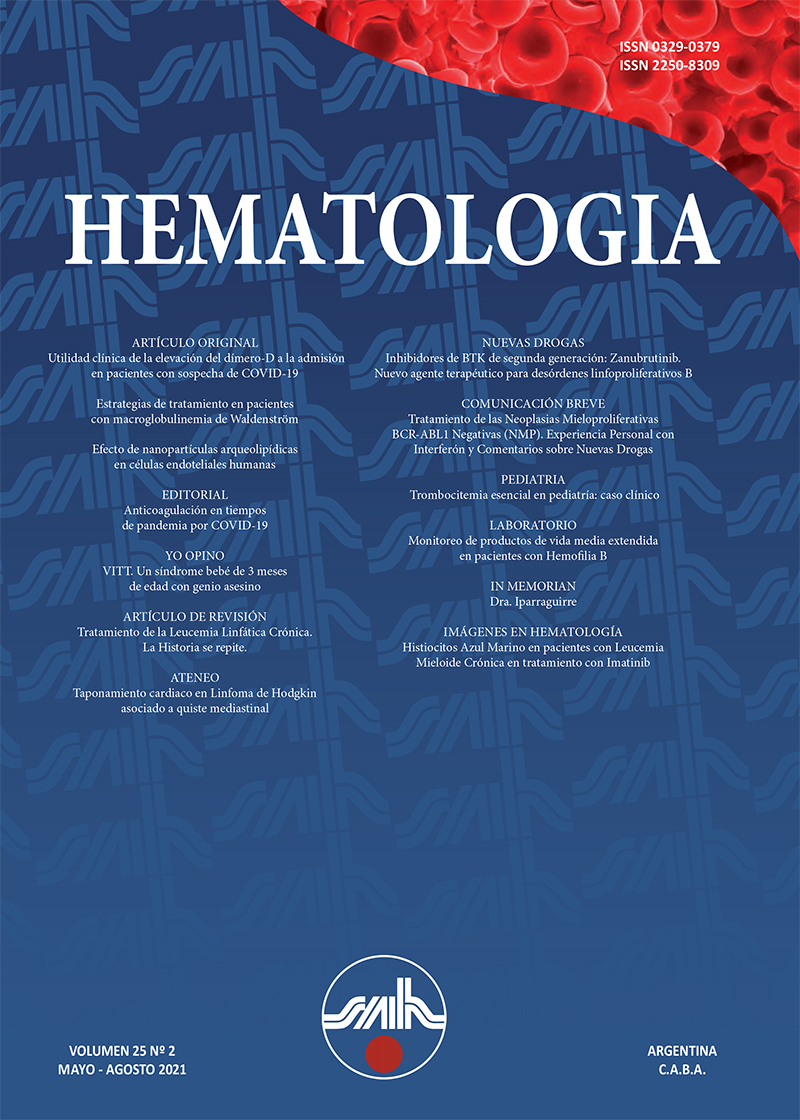Abstract
Introduction: Studies associated increased D-dimer (DD) with severe COVID-19.
Methods: Retrospective cohort of patients with suspicion of COVID-19 and DD measurement. Plasma levels of DD at first consultation and the DD peak during hospitalization were recorded (expressed in ng/mL FEU or as patient/age-adjusted expected ratio-P/AA DD-). COVID-19 positive and negative groups were compared. Factors associated with severity and death were evaluated in both groups.
Results: Out of 723 patients included, 162 were diagnosed with SARS-CoV2 infection. COVID-19 patients had lower levels of DD [465(226-880) vs 691(295-1823) ng/mL,p<0.0001] and P/AA DD [0.76(0.44-1.30) vs 1.21 (0.55-2.68),p<0.0001] than negative ones.. Patients with pneumonia had higher P/AA DD than those with upper airways infections in both groups. In COVID-19 patients with pneumonia, DD>500ng/mL at diagnosis was associated with an increased risk of severity, however it was not evidenced with P/AA DD>1. In this group, DD at admission was not different in deaths compared with survivors. Deceased COVID-19-negative patients had higher levels of DD
Conclusions: DD seems not to be a specific biomarker of COVID-19 infection, and its increase is more pronounced in patients who developed pneumonia from other etiologies. Considering age-adjusted DD reference values could avoid the overestimation of its prognostic value in COVID-19 patients.
References
2. Zhang, Yan X, Fan Q y col. D-dimer levels on admission to predict in-hospital mortality in patients with COVID-19. J Thromb Haemost. 2020;18(6):1324-1329.
3. Weitz JI, Fredenburgh J, Eikelboom J. A Test in Context: D-Dimer. Journal of the American College of Cardiology. 2017;70(19):2411-2420.
4. Wu C, Chen X, Cai Y y col. Risk factors associated with acute respiratory distress syndrome and death in patients with coronavirus disease 2019 pneumonia in Wuhan, China. JAMA Intern Med. 2020;180(7):934-943.
5. Tang N, Bai H, Chen X y col. Anticoagulant treatment is associated with decreased mortality in severe coronavirus disease 2019 patients with coagulopathy. J Thromb Haemost. 2020;18(5):1094-9.
6. Mouret U, Rodríguez M, López A y col. Comparación de criterios de Berlín vs Kigali para diagnóstico del síndrome de insuficiencia respiratoria aguda. Med Crit. 2019;33(5):221-232.
7. Global strategy for the diagnosis, management, and
prevention of COPD. www.goldcopd.org (2020, accessed 12 July 2020).
8. Riddle M. Standards of Medical Care in Diabetes—2020. Diabetes Care. 2020; 43(8): 1980-1980.
9. Huan H, Yanga L, Liu R y col. Prominent changes in blood coagulation of patients with SARS-CoV-2 infection. Clin Chem Lab Med. 2020;58(7):1116-1120.
10. Rami M, ElshazliI D , Eman A y col. Diagnostic and prognostic value of hematological and immunological markers in COVID-19 infection: A meta-analysis of 6320 patients. PLOS ONE. 2020;15(8):e0238160.
11. Ge Y, Liu C, Wang N y col. Elevated Plasma D-Dimer in Adult Community-Acquired Pneumonia Patients is Associated with an Increased Inflammatory Reaction and Lower Survival. Clin Lab. 2019;1: 65.
12. Zhan ZG, Li CS. Prognostic value of D-dimer in patients with sepsis in emergency department: a prospective study. Chinese Critical Care Medicine. 2012;24:135-9. 21.
13. Rodelo JR, De la Rosa G, Valencia ML y col. D-dimer is a significant prognostic factor in patients with suspected infection and sepsis. Am J Emerg Med. 2012;30(9):1991-9.
14. Guan WJ, Ni ZY, Hu Y. Clinical characteristics of coronavirus disease 2019 in China. N Engl J Med. 2020;382:1708-1720.
15. Zhou F, Yu T, Du R y col. Clinical course and risk factors for mortality of adult inpatients with COVID-19 in Wuhan, China: a retrospective cohort study. Lancet- 2020;395:1054-1062.
16. Righini M, Van Es J, Den Exter PL y col. Age-adjusted D-dimer cutoff levels to rule out pulmonary embolism: the ADJUST-PE study. JAMA- 2014;311:1117-1124.
17. Yin S, Huang M, Li D, Tang N. Difference of coagulation features between severe pneumonia induced by
SARS-CoV2 and non-SARS-CoV2. J Thromb Thrombolysis- 2020; 3:1-4. doi:10.1007/s11239-020-02105-8.
Epub ahead of print
18. Hoechter DJ, Becker-Pennrich A, Langrehr J y col. Higher procoagulatory potential but lower DIC score in COVID-19 ARDS patients compared to non-COVID-19 ARDS patients. Thromb Res2020;196:186-192.
All material published in the journal HEMATOLOGÍA (electronic and print version) is transferred to the Argentinean Society of Hematology. In accordance with the copyright Act (Act 11 723), a copyright transfer form will be sent to the authors of approved works, which has to be signed by all the authors before its publication. Authors should keep a copy of the original since the journal is not responsible for damages or losses of the material that was submitted. Authors should send an electronic version to the email: revista@sah.org.ar

